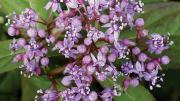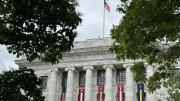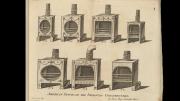The blue evergreen hydrangea’s history as a natural treatment for fever and malaria dates back in Chinese lore at least two thousand years, to the Han dynasty (206 b.c.–a.d. 220). During this era, information about the plant’s root (and about hundreds of other Chinese herbal remedies) first appeared as part of a written collection of oral traditions said to have originated with the mythological emperor-god Shen Nong in 2800 b.c. Western medicine first noted the healing potential of the plant’s root extract, chang shan, in the late 1940s, when the active ingredient was identified in medical journals and put to use suppressing parasitic growth in animal feed.
But despite millennia of use, exactly how Dichroa febrifuga heals remained a mystery.
Malcolm Whitman, a professor of developmental biology at the Harvard School of Dental Medicine, and Tracy Keller, an instructor and researcher in Whitman’s lab, began studying the root extract’s chemical base in 2002, seeking to learn how it affects the body on a cellular level. A collaborative study they published in 2009 reported that halofuginone—a synthetic version of the root extract’s active agent—was halting the production of a particular strain of rogue T-cell. T-cells typically attack outside viruses as part of the body’s immune-system response, but harmful variants turn against healthy cells, leading to inflammation and damage. In multiple sclerosis, for example, such rogue cells attack connections in the nervous system, disrupting transmission and affecting everything from coordination to speech. Halofuginone also appeared to work selectively, stopping the production of these “bad” T-cells without harming any of the good ones, leaving the immune response intact.
But Keller and Whitman wanted to understand the molecular mechanism at work in halofuginone’s autoimmune suppression. What they found, as laid out in the March issue of the journal Nature Chemical Biology, is that halofuginone halts the production of a specific amino acid, proline—the absence of which in turn inhibits the production of the rogue T-cells.
For Whitman, the paper’s first author, and Keller, the senior author, questions remain: What is special about proline? Are other amino acids involved in similar inhibitive functions? Are there differences in the amino acids’ ability to activate changes in the immune system?
But there are also immediate applications of their work. “Now we have a very specific chemical mechanism that can predict how to make new compounds,” says Whitman. Keller notes that the near-term focus is on developing their work for topical pharmaceutical products, offering its potential to treat severe burns as an example. In such wounds, she says, the halifuginone can affect T-cells that regulate tissue homeostasis in a way that allows for wound healing while preventing scarring.
Their work has also had an immediate impact on the study of hydrangea root’s traditional target, malaria. “There is a lot of excitement about antimalarial properties of halofuginone,” says Whitman, noting that collaborators from Massachusetts General Hospital and the Harvard School of Public Health are pursuing studies of this application. “It is not only effective, but it is working on a completely different target from all of the other antimalarial drugs”—a particularly important development given the spread of malarial strains resistant to current drug treatments.
The long-term application of their work could extend to autoimmune diseases like inflammatory bowel disease and rheumatoid arthritis, and Whitman notes that researchers are already testing halofuginone in humans as a treatment for muscular dystrophy. “We’ll see how that works,” he says. “But we think there are definitely a lot of new directions to go in, all building on what nature provided.”









